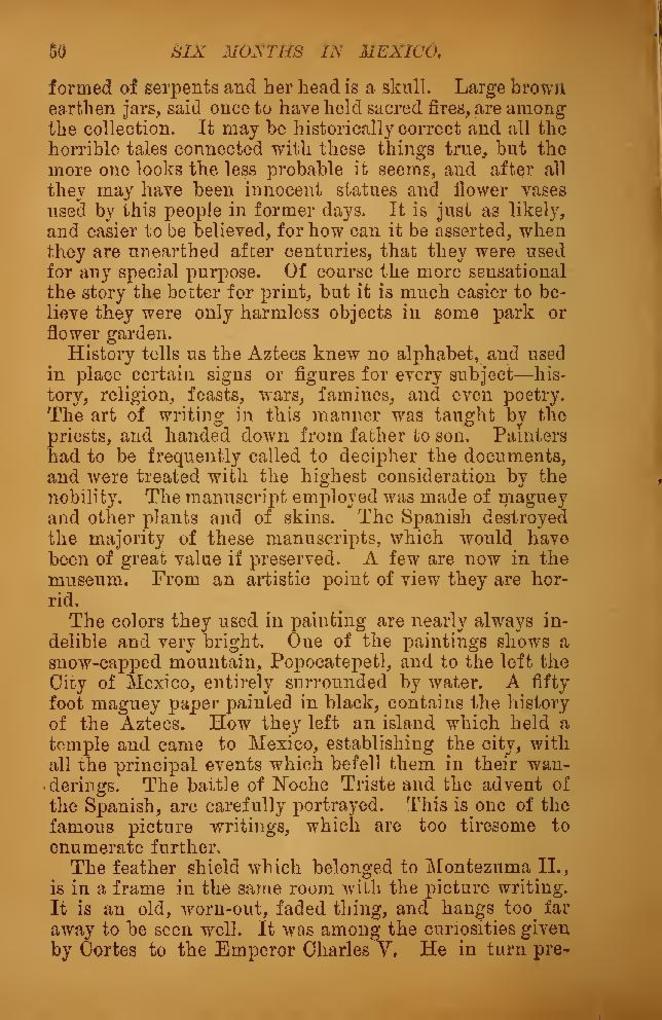formed of serpents and her head is a skull. Large brown earthen jars, said once to have held sacred fires, are among the collection. It may be historically correct and all the horrible tales connected with these things true, but the more one looks the less probable it seems, and after all they may have been innocent statues and flower vases used by this people in former days. It is just as likely, and easier to be believed, for how can it be asserted, when they are unearthed after centuries, that they were used for any special purpose. Of course the more sensational the story the better for print, but it is much easier to believe they were only harmless objects in some park or flower garden.
History tells us the Aztecs knew no alphabet, and used in place certain signs or figures for every subject—history, religion, feasts, wars, famines, and even poetry. The art of writing in this manner was taught by the priests, and handed down from father to son. Painters had to be frequently called to decipher the documents, and were treated with the highest consideration by the nobility. The manuscript employed was made of maguey and other plants and of skins. The Spanish destroyed the majority of these manuscripts, which would have been of great value if preserved. A few are now in the museum. From an artistic point of view they are horrid.
The colors they used in painting are nearly always indelible and very bright. One of the paintings shows a snow-capped mountain, Popocatepetl, and to the left the City of Mexico, entirely surrounded by water. A fifty foot maguey paper painted in black, contains the history of the Aztecs. How they left an island which held a temple and came to Mexico, establishing the city, with all the principal events which befell them in their wanderings. The battle of Noche Triste and the advent of the Spanish, are carefully portrayed. This is one of the famous picture writings, which are too tiresome to enumerate further.
The feather shield which belonged to Montezuma II., is in a frame in the same room with the picture writing. It is an old, worn-out, faded thing, and hangs too far away to be seen well. It was among the curiosities given by Cortes to the Emperor Charles V. He in turn pre-
